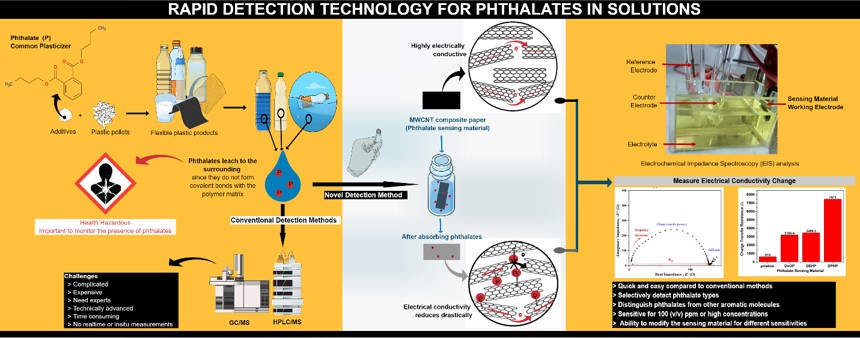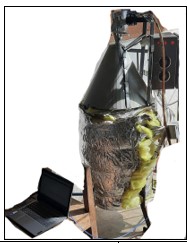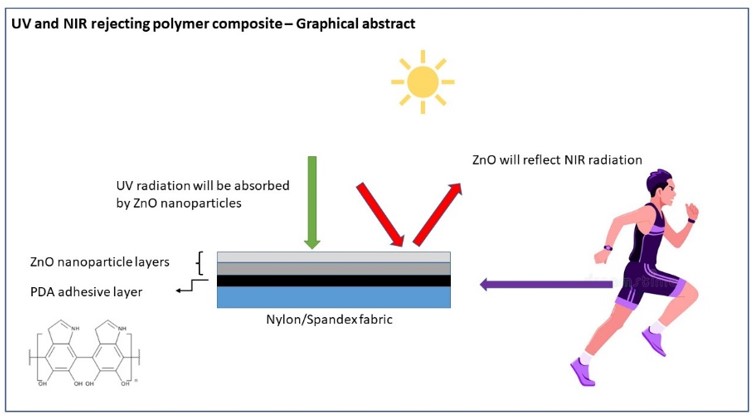Phthalates are a known plasticizer group used in producing flexible plastic products, especially soft PVC products. However, the leaching of these phthalates used in plastic products to the surrounding arose many complications. The primary purpose of this research project was to develop a rapid but easy-to-handle phthalate detection technique compared to the existing phthalate detection technologies. Under this research, a novel material from highly conducting MWCNTs was developed to detect phthalates in solutions. In presence of phthalates the conductivity was changed and the amplitude of the change is used to identify the phthalate quantitatively as well as qualitatively. The change of conductivity of the buckypaper after adsorbing phthalates was detected using Electrochemical Impedance Spectroscopy. This developed buckypaper showed the ability to distinguish different types of phthalates: DEHP, DnOP, and DPHP while being sensitive to 1000 (v/v) ppm or higher concentrated phthalate in solutions. As a further step we have focus to increase the sensitivity of the buckypaper to different phthalates. For that a MWCNT/Cellulose composite paper was developed. This developed composite paper showed the ability to fine-tune the phthalate sensitivity. Based on the results obtained, this project shows the potential of developing a portable phthalate sensor to carry out in-situ and real-time analysis of detecting phthalates in solutions.
Abstracts: APS March Meetings 2021, ITUM Research Symposium 2021, MRS Falls Meeting and Exhibit 2021
Manuscripts: ChemistrySelect Journal (Under Review, 2022)
Awards: Best Graphical Abstract 2022 at the Graphical Abstract Competition 2022 organized by the Society of Polymer Science, USJ

Conferences:
Abeysinghe, H.; Etampawala, T.N.B.; Wickramasinghe, G.; Perera, V.P.S.; Late News: Multi-Walled Carbon Nanotube/Cellulose Composite for Phthalate Detection in Solutions – Presented at MRS Fall Meeting and Exhibit 2021, 6th -9th December
Abeysinghe, H.; Etampawala, T.N.B.; Wickramasinghe, G.; Perera, V.P.S.; Multi-Walled Carbon Nanotube Sensor for Detecting Phthalates in Solutions, Proceedings of ITUMR Symposium ‘Broadening Horizons’ ISSN: 2773-7055, pg. 87-91, Presented at ITUM Research Symposium 2021, 29th September
Abeysinghe, H.; Etampawala, T.N.B.; Wickramasinghe, G.; Perera, V.P.S.; Buckypaper Sensors for Detection of Phthalates in Solution Bulletin of the American Physical Society. Presented at APS March Meeting 2021, 15th – 19th March
Manuscripts:
Abeysinghe, H.; Wickramasinghe, G.; Perera, V.P.S.; Etampawala, T.N.B.; MWCNT Buckypaper as Electrochemical Sensing Platform: A Rapid Detection Technology for Phthalic Acid Esters in Solutions, ChemistrySelect (Submitted, 2022)
Awards:
Best Graphical Abstract 2022 at the Graphical Abstract Competition 2022 organized by the Society of Polymer Science, USJ






